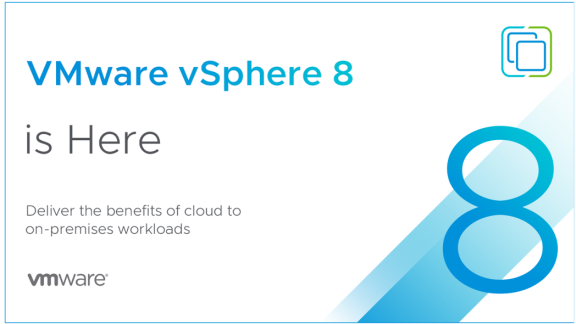
Revolutionizing with Data Processing Units (DPU)
vSphere 8.0 introduces the integration of DPUs, akin to GPUs, within the hardware layer to enhance computing, storage, and networking capabilities. This innovation hosts an ESXi instance directly on the DPU, enabling offloading of essential ESXi and NSX services for network and security enhancements. This leap forward supports network offloading with NSX for Greenfield installations, showcasing VMware’s commitment to elevating infrastructure efficiency and security.
vSphere with Tanzu: Unified Kubernetes Ecosystem
VMware extends its Kubernetes orchestration capabilities in vSphere 8 by unifying Tanzu Kubernetes Grid (TKG) runtimes. This move simplifies Kubernetes deployments across vSphere clusters and clouds, ensuring a consistent runtime for all environments. Furthermore, vSphere 8 introduces ‘vSphere zones’ for workload isolation across clusters, enhancing availability and compute utilization for Kubernetes deployments.
Lifecycle Management Evolution
With vSphere 8, VMware phases out baseline lifecycle management, transitioning to a more advanced staging mechanism within the vSphere Lifecycle Manager. This update allows for pre-staging of update payloads, minimizing downtime and the risk of update failures. Parallel Remediation accelerates the update process across multiple hosts simultaneously, streamlining maintenance operations.
AI/ML Workload Optimization
vSphere 8.0 debuts Device Groups and Device Virtualization Extensions (DVX) to support AI/ML workloads better. These features allow for grouping devices in the hardware layer and offer enhanced management of physical hardware devices within virtual machines, promoting operational efficiency and flexibility.
Guest OS and Workload Enhancements
The introduction of Virtual Hardware Version 20 and a new Virtual TPM Provisioning Policy cater to the latest operating system requirements, such as Windows 11. These enhancements address the security concerns associated with cloning TPM-equipped VMs and ensure a secure, scalable deployment of sensitive workloads.
Security and Workload Performance Enhancements
vSphere 8.0 strengthens its security framework with ESXi Quick Boot support for TPM 2.0, ensuring faster patching without compromising host integrity. Additionally, vSphere Fault Tolerance now supports virtual TPM, broadening its applicability for secure systems. VMware also introduces enhancements for NFS datastore VMkernel binding and identity services, aligning with modern security practices.
Simplifying NUMA Configuration
A new simplified Virtual NUMA Configuration feature enhances performance and latency management, offering VI admins more control over NUMA nodes. This, along with the CPU topology attire, provides a consolidated view of cores, vCPUs, sockets, threads per core, and NUMA nodes, facilitating optimized resource allocation.
Conclusion: A Milestone for VMware
VMware vSphere 8.0 marks a significant advancement in virtualization technology, addressing the evolving needs of modern IT infrastructures. With its focus on efficiency, security, and flexibility, vSphere 8.0 is equipped to support the most demanding workloads, from AI/ML to Kubernetes orchestration. As organizations plan their upgrade paths, VMware’s latest offering promises to be a cornerstone in the journey towards a more agile, secure, and high-performing IT landscape.